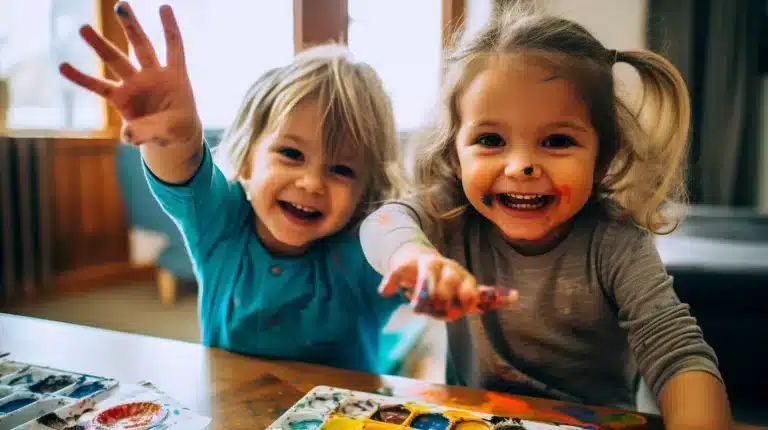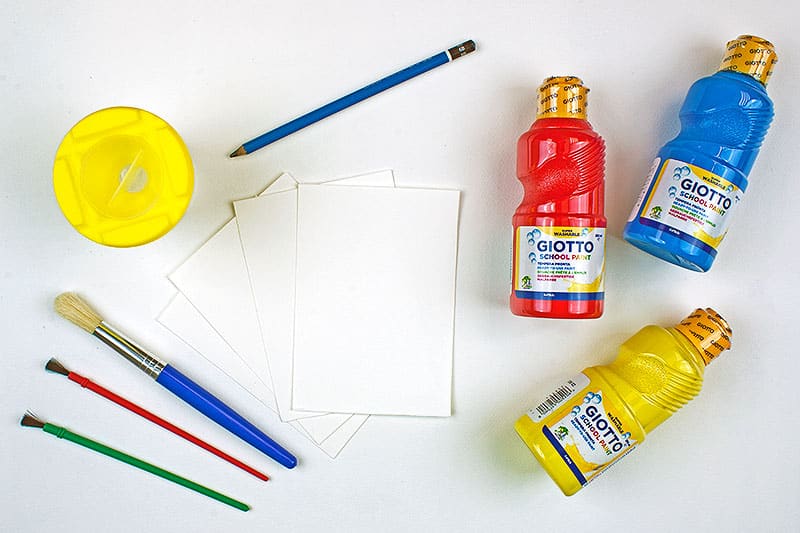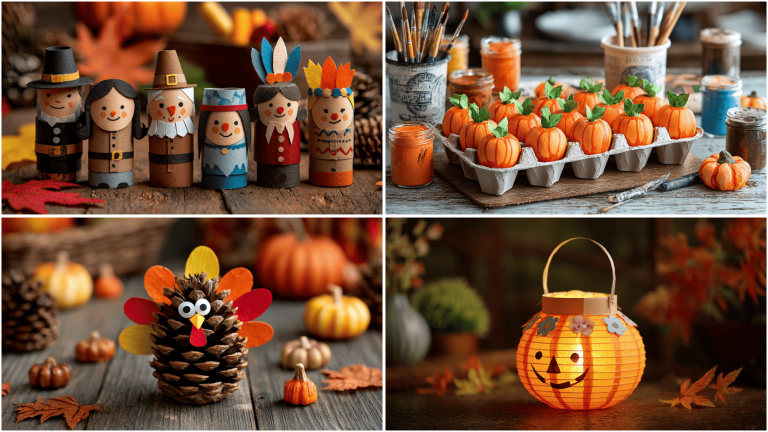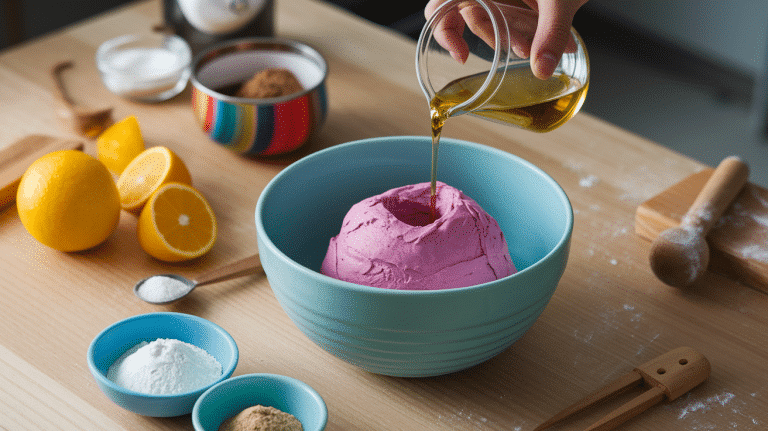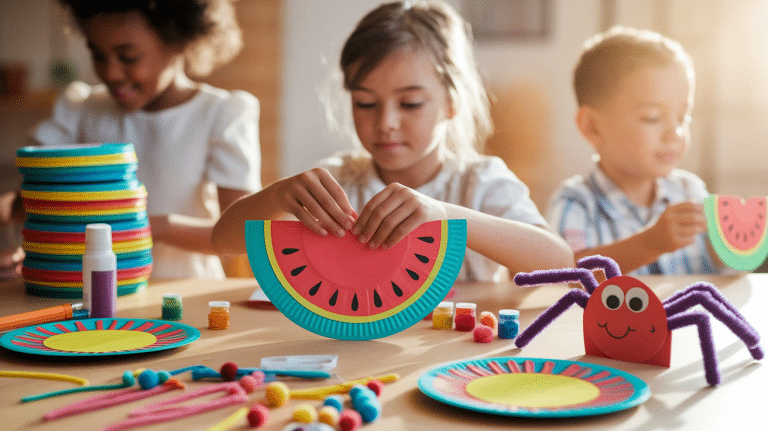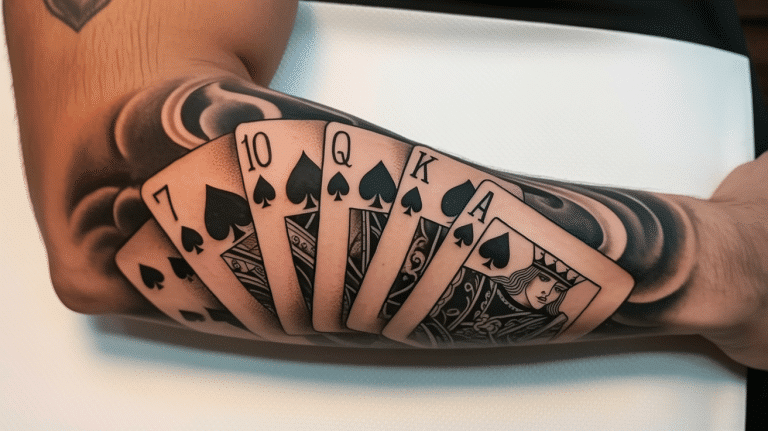Have your kid ever tried finger painting? If not, then you must help them try at least once. Because finger painting is fun and easy for kids, it helps them grow in many ways.
Even if it gets messy, the good thing it does for your child makes it worth it. It is not only beneficial for mental health but also for physical health.
However, for this, you don’t require multiple stuff, just some safe paint for kids, paper for painting on, and a little excitement, which will come once your kids start doing it.
It’s cool because instead of using brushes, kids use their fingers to create art. So, even though it’s messy, the fun and learning make it a great activity for kids of all ages.
So, what are you waiting for? Get creative with those tiny fingers now!
Skills that Children Get from Finger Painting
Finger painting ideas not only keep your children engaged but also make them learn various interpersonal skills.
To get into detail, some of the skills have been listed below.
- Fine Motor Skills: Finger painting helps little fingers strengthen and coordinate, preparing them for precise tasks like writing and buttoning.
- Hand-Eye Coordination: Dabbing and swiping with fingers sharpens the connection between what eyes see and what hands do, laying the groundwork for activities like catching a ball.
- Creativity: Finger painting is a vibrant playground for imagination, allowing kids to create without limits and giving birth to a world of their own making.
- Color Recognition: Sorting, mixing, and applying different hues in finger painting sessions teach kids to identify and name colors effortlessly.
- Spatial Awareness: The experience of spreading paint across surfaces helps children understand the concept of space and how they fit into it.
- Grip Strength: Squeezing paint tubes and containers is an entertaining workout that strengthens the small muscles in the hands, enhancing overall grip strength.
- Sensory Exploration: Feeling a smooth or textured paint engages multiple senses, providing a rich sensory experience that aids overall sensory development.
- Language Development: Talking about their art, describing colors, and expressing ideas during finger painting sessions contribute to expanding a child’s vocabulary and language skills.
- Emotional Expression: Finger painting allows kids to convey emotions visually, offering a therapeutic outlet for joy, frustration, or feelings they may not have words for.
- Focus and Concentration: The overall nature of finger painting demands a child’s full attention, fostering the development of focus and concentration skills.
- Pattern Recognition: Creating patterns with fingers introduces children to early math concepts, setting the stage for more complex mathematical thinking.
- Problem-Solving: Running out of a favorite color or figuring out how to blend different shades teaches kids basic problem-solving skills and adaptability.
- Social Skills: Group finger painting sessions encourage collaboration, sharing, and communication, fostering crucial social skills.
- Self-Expression: Through finger painting, children learn to communicate and express their thoughts, ideas, and stories in a visually engaging way.
- Independence: Choosing colors, deciding where to paint, and completing artwork independently instill a sense of autonomy and self-reliance.
- Pre-Writing Skills: The finger movements in painting help develop the fine motor skills needed for later writing, drawing, and other detailed tasks.
- Patience: Waiting for paint to dry is a lesson in patience, teaching children to tolerate delays and embrace the anticipation of a finished masterpiece.
- Critical Thinking: Planning and executing designs in finger painting encourage basic critical thinking as children make decisions about their artwork.
- Confidence: Completing and displaying their finger-painted creations boosts self-esteem and confidence, fostering a positive self-image.
- Appreciation for Art: Early exposure to the joy of creating art nurtures an appreciation for creativity, beauty, and different forms of artistic expression.
Materials Required for Finger Painting
Well, the materials required for finger painting crafts are very limited. One can easily get those from the market and create beautiful art.
Let’s check what exactly is needed for this.
1. Washable Finger Paints
Always prefer vibrant, non-toxic paints that are easy to clean and safe for kids.
So, let your little ones explore colors freely by dipping their fingers into the paint and creating imaginative masterpieces on paper.
2. Thick Paper or Canvas
Make sure to provide a sturdy surface for your child’s artistic attempt.
Using thick paper or a small canvas effectively absorbs the paint without tearing, allowing your kids to express themselves without limitations.
3. Apron or Old Clothes
Use an apron or old cloth to protect your child’s clothing.
Finger painting can get sticky, but the right attire ensures a stress-free and enjoyable experience.
4. Palette or Paint Trays
To avoid mixing of different colors, use a palette or paint trays. This helps children experiment with various hues and keeps the painting process organized.
5. Wipes or Towels
Always keep wipes or towels handy for quick clean-ups when it’s about your kids. They easily wipe off excess paint from little hands or any accidental spills.
Summing It Up
Overall, Finger painting is not at all just a sticky task. It’s all about a skill-building adventure for kids!
When those little fingers dive into a colorful mess, children aren’t just creating art; they are gaining fine motor skills, boosting hand-eye coordination, and letting creativity flow.
So, next time you see a paint-covered kiddo, know that behind the mess lies a masterpiece of skill development!
So, without wasting time, indulge your kids in these amazing finger-painting tasks to make them more skillful.
Frequently Asked Questions
What Can Children Learn from Finger Painting?
Finger painting enhances children’s fine motor skills, fostering hand-eye coordination and precision.
It stimulates creativity and self-expression and allows kids to freely explore colors, shapes, and textures.
What Do Children Learn from Painting Activities?
Painting activities teach kids to use brushes, colors, and paper, boosting fine motor skills. They express creativity by choosing colors and creating shapes, enhancing imagination.
However, exploring textures and colors aids sensory development.
What Age is Finger Painting For?
Finger painting is generally suitable for toddlers and preschoolers, typically starting around 1 to 2 years old. Children are developing fine motor skills and exploring their senses at this age.
Finger painting provides a safe and enjoyable way for them to engage with art and express creativity through various experiences.

